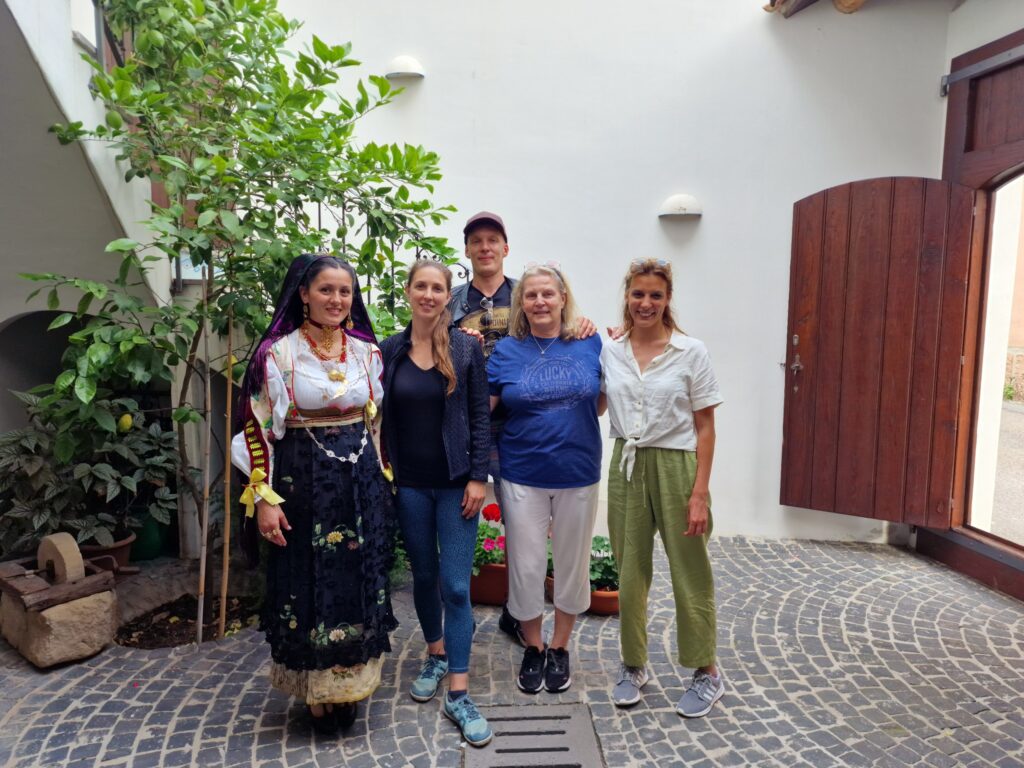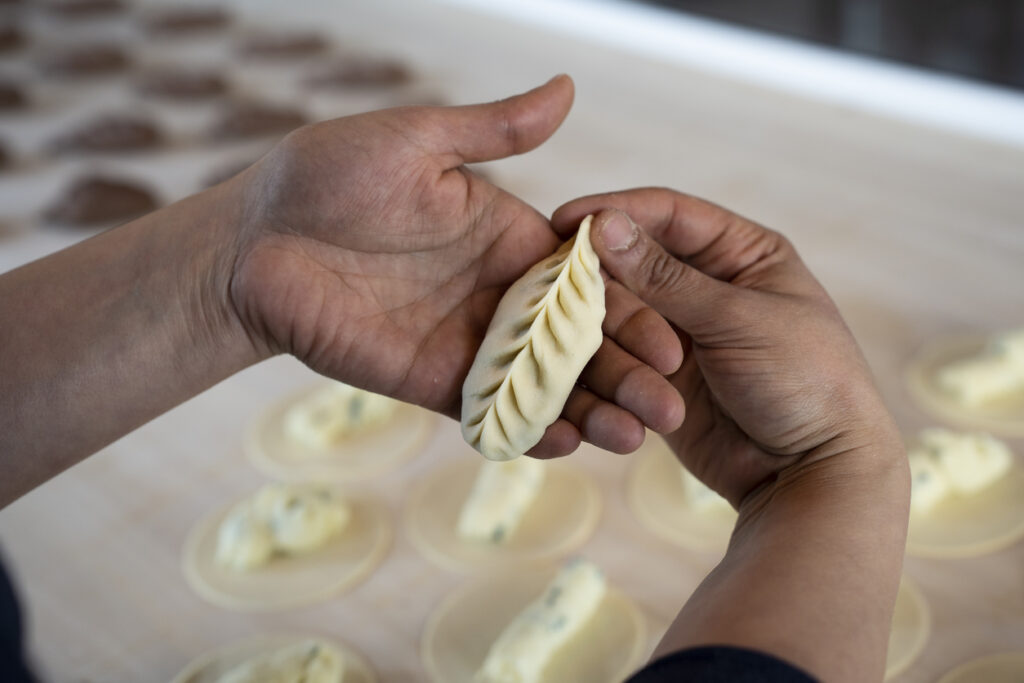Ever wondered if a humble bowl of soup could hold the key to a longer, healthier life? Welcome to the world of Sardinian Minestrone, the cherished dish of centenarians in the heart of Sardinia’s Blue Zone. This flavorful elixir isn’t just a delight for your taste buds—it’s brimming with nutrients that could unlock the secrets to longevity. Ready to discover how Sardinian Minestrone can transform your health? Let’s dive into this delightful dish that’s a staple for those who live the longest and healthiest lives on the planet.

Why Sardinians Love Minestrone
The Cultural Significance of Minestrone in Sardinia
Minestrone isn’t just a meal in Sardinia; it’s a cultural icon. This hearty soup reflects the island’s rich culinary traditions, using fresh, local ingredients passed down through generations. Sardinian Minestrone is often called the “soup of centenarians” because it’s a staple in the diet of many of the island’s oldest residents. Its nutrient-dense profile makes it a perfect dish for those seeking a long, healthy life.
Ingredients That Make Sardinian Minestrone Special
Fresh and Seasonal Vegetables: The Heart of the Soup
The foundation of Sardinian Minestrone lies in its fresh, seasonal vegetables. These ingredients, often picked straight from the garden, provide a rich array of vitamins and minerals essential for health. Beans and legumes are a critical component of this soup. They’re packed with protein and fiber, which aids in digestion and helps maintain stable blood sugar levels. Studies have shown that diets rich in legumes can significantly reduce the risk of chronic diseases. Herbs and spices such as basil, thyme, and garlic add a burst of flavor and boast numerous health benefits, including anti–inflammatory and antioxidant properties. These ingredients are crucial in transforming a simple vegetable soup into a health-boosting elixir.

Nutritional Benefits of Sardinian Minestrone
Macronutrients and Micronutrients
Sardinian Minestrone offers a well-rounded nutritional profile. It includes a balance of macronutrients—carbohydrates, proteins, and fats—and is rich in micronutrients like vitamins A, C, and K, and minerals like potassium and magnesium. Antioxidants are abundant in the vegetables and herbs used in Minestrone. These compounds help combat oxidative stress and reduce inflammation, contributing to longevity and improved health. Fiber is essential for gut health, and Sardinian Minestrone is loaded with it. The beans, legumes, and vegetables provide both soluble and insoluble fiber, promoting healthy digestion and preventing various gastrointestinal issues.
Fiber is essential for gut health, and Sardinian Minestrone is loaded with it. The beans, legumes, and vegetables provide both soluble and insoluble fiber, promoting healthy digestion and preventing various gastrointestinal issues. This soup not only nourishes but also hydrates. The high water content in Minestrone helps maintain hydration levels, essential for keeping energy levels up and supporting overall bodily functions.
Cooking Sardinian Minestrone: From Tradition to Your Table
Traditional Sardinian Cooking Techniques
Traditional methods of preparing Minestrone involve slow cooking to allow flavors to meld and nutrients to be extracted fully. This technique ensures that every bowl is both delicious and nutrient-rich. To make authentic Sardinian Minestrone, start by sautéing onions and garlic in olive oil. Add your choice of fresh, seasonal vegetables and cook until tender. Incorporate beans and legumes, followed by a rich vegetable broth. Simmer until all ingredients are well-cooked and flavors have blended beautifully. While traditional recipes are cherished, modern variations can include additional superfoods like kale or quinoa to boost nutritional value. These twists keep the recipe exciting while retaining its health benefits. Avoid overcooking the vegetables to maintain their nutritional integrity. Also, don’t skimp on the olive oil and herbs—they are essential for the authentic flavor and health benefits of the soup.

Longevity Tour
Join us on a journey to Sardinia’s Blue Zones, where you’ll not only explore breathtaking landscapes but also create lifelong memories with fellow travelers.
Sardinian Minestrone and Longevity: The Science Behind It
Research Linking Diet to Longevity in Blue Zones
Extensive research, including studies published in The Lancet, links the diet of Blue Zones, including Sardinia, to increased life expectancy. These studies emphasize the importance of plant–based, nutrient–dense foods like Minestrone. Numerous studies support the health benefits of Minestrone’s key ingredients. For example, research in the Journal of Nutrition highlights the cardiovascular benefits of beans and legumes, while a study in The American Journal of Clinical Nutrition underscores the anti-inflammatory properties of olive oil.
Incorporating Sardinian Minestrone into Your Diet
Weekly Meal Plans Featuring Minestrone
Incorporate Minestrone into your weekly meal plans with ease. It’s a versatile dish that can be enjoyed for lunch or dinner, and it pairs well with various side dishes to create a balanced meal. Sardinian Minestrone is adaptable to all seasons. Use spring vegetables like asparagus and peas in the spring, tomatoes and zucchini in the summer, hearty root vegetables in the fall, and nutrient-dense greens in the winter.
Complement your Minestrone with other Mediterranean delights such as fresh salads, whole-grain bread, and a glass of red wine. This pairing enhances the overall dining experience and boosts the meal’s nutritional value. Transform Minestrone into a kid-friendly dish by blending some of the soup to create a smoother texture and adding fun-shaped pasta. This makes it more appealing to younger palates while maintaining its nutritional benefits.
The Social Aspect of Sardinian Minestrone
Minestrone as a Communal Dish: Bringing People Togethe
In Sardinia, Minestrone is more than food; it’s a communal experience. Sharing a pot of Minestrone brings people together, fostering a sense of community and connection, which is also linked to longevity. Family recipes for Minestrone are treasured in Sardinia. These recipes, passed down through generations, carry not only nutritional wisdom but also cultural heritage and family bonds.
Invite friends and family for a Sardinian Minestrone night. Share the rich flavors and health benefits of this centenarian soup while enjoying good company. Offer side dishes, drinks, and a cozy atmosphere for an unforgettable evening. Hear from others who have embraced Sardinian Minestrone in their lives. These shared experiences highlight the soup’s impact on health and community, inspiring you to incorporate it into your own lifestyle.
Sardinian Minestrone Recepie:

Ingredients for Minestrone (Serves 4) :
To make culurgiones, you begin by boiling and mashing potatoes, then mixing them with grated pecorino cheese, minced garlic, and finely chopped fresh mint. The dough is made from a simple blend of semolina flour, water, and salt, rolled out thin and cut into circles. Each circle is filled with the potato mixture, then folded and sealed using a special pinching technique to create the beautiful braided pattern. Once shaped, the culurgiones are boiled until they float and served with a light tomato sauce or simply drizzled with olive oil and sprinkled with extra pecorino.
These pasta parcels are more than just food; they carry the essence of Sardinian tradition and the love of homemade cooking, making them a must-try for anyone who wants to experience the island’s rich culinary heritage.
Vegetables:
- 2 medium potatoes, peeled and diced
- 2 carrots, peeled and diced
- 1 onion, finely chopped
- 1 leek, thinly sliced
- 2 stalks celery, diced
- 2 zucchini, diced
- 2 ripe tomatoes, peeled and chopped (or 1 cup canned tomatoes)
- 1 small cabbage (or savoy cabbage), finely chopped
Legumes:
- 1 cup dried cannellini beans (or 1 can, drained and rinsed)
- 1/2 cup dried chickpeas (soaked overnight) or 1 can of chickpeas
- 1/2 cup dried lentils
Pasta or Fregola (optional):
- 100g Sardinian fregola (a small, toasted semolina pasta) or small soup pasta (like ditalini or barley)
Herbs & Seasonings:
- 3 tbsp extra virgin olive oil
- 1 garlic clove, minced
- 2 bay leaves
- A few sprigs of fresh thyme or rosemary
- Salt and pepper to taste
- 1 small bunch of parsley, chopped
Optional:
- 1 cup grated pecorino sardo cheese for serving
- A drizzle of extra virgin olive oil for garnish
Instructions:
1. Prepare the legumes:
- If using dried cannellini beans and chickpeas, soak them overnight. Rinse and drain them before use.
- Cook the beans and chickpeas separately in large pots of water for about 1–1.5 hours or until tender. Set aside.
2. Start the soup base:
- In a large pot, heat the olive oil over medium heat.
- Add the chopped onion, leek, and garlic, and sauté until soft and translucent, about 5 minutes.
- Add the carrots, celery, and zucchini, and cook for another 5 minutes, stirring occasionally.
3. Add the cabbage and tomatoes:
- Stir in the cabbage and the chopped tomatoes (or canned tomatoes) and cook for another 5 minutes to combine flavors.
4. Simmer the soup:
- Add the potatoes, cooked beans, chickpeas, lentils, and the herbs (bay leaves and thyme/rosemary).
- Pour enough water or vegetable broth to cover all the ingredients, usually about 1.5 liters (6 cups).
- Bring the soup to a boil, then reduce the heat and let it simmer gently for about 45 minutes to 1 hour until the vegetables and lentils are tender.
5. Add pasta (if using):
- If you’re using fregola or small pasta, add it during the last 10–15 minutes of cooking, ensuring it cooks through but doesn’t get mushy.
- If needed, add more broth or water to adjust the soup’s consistency.
Final touches:
- Season the minestrone with salt and pepper to taste.
- Stir in chopped parsley and drizzle a little olive oil over the top before serving.
Serving:
- Serve hot, with a generous sprinkle of grated pecorino cheese on top and crusty bread on the side.
Enjoy this hearty, wholesome taste of Sardinia!
Recipe Notes for Minestrone
- You can customize this soup based on seasonal vegetables. Add green beans, peas, or other favorite veggies as desired.
- For a vegetarian version, simply omit any meat-based stock, and ensure the pecorino cheese is vegetarian-friendly.
Nutritional Value (Per Serving)
- Calories: 360 kcal
- Protein: 13g
- Carbohydrates: 55g
- Sugars: 7g
- Dietary Fiber: 14g
Start Your Minestrone Journey Today
Begin your Minestrone journey with simple, actionable steps. Gather fresh ingredients, follow our guide, and enjoy the process of creating this health-boosting dish. Explore resources for authentic Sardinian recipes and find the best ingredients to make your Minestrone truly special.
References and Further Reading
- National Geographic: The Secrets of Blue Zones
- The Lancet: Research on Diet and Longevity
- Journal of Nutrition: Cardiovascular Benefits of Beans and Legumes
- American Journal of Clinical Nutrition: Anti-Inflammatory Properties of Olive Oil
- Harvard Health: The Mediterranean Diet and Its Benefits
- Journal of Gastroenterology: Fiber and Gut Health
- Blue Zones: Live Longer, Better
- Journal of Food Science and Technology: Antioxidants in Vegetables
- Mayo Clinic: Importance of Hydration
- PubMed Central: Health Impacts of Seasonal Eating

Sardinia Zona Blu Tours
We are a family business and we are very enthusiastic about Sardinia and Longevity. That is why we are offering Blue Zone Tours in the heart of Sardinia, so you can experience the real blue zone in Sardinia.
Follow us:
Featured Post:


